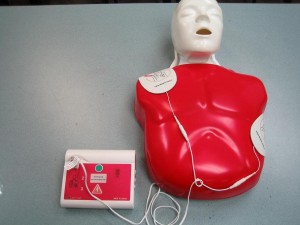Tell me about giving CPR.
With heart disease killing millions of people all over the world each year, it pays to know how to give basic CPR and first aid. CPR is the first line of management given to a person who experiences a heart attack and sudden cardiac arrest (SCA). When a perosn goes into cardiac arrest, his or her heart stops beating. Chest compressions manually pump the heart, sending blood to the rest of the body as well as attempting to restore spontaneous circulation. As a management becomes more and more complicated, medication and equipment are included, adjunct with basic chest compressions and rescue breaths.
Our programs at Honolulu CPR focus on both CPR and basic first aid training. We teach our students how to give CPR to adults and children with the three core skills: compressions, ventilation, and defibrillation. You won’t find a course on CPR and first aid training in Honolulu that is better than Honolulu CPR.
Can you explain the three “core skills”?
In performing cardiopulmonary resuscitation, there are three basic or core skills. The first two are the most commonly used in out-of-hospital cardiac arrests by bystander rescuers, specifically chest compressions and rescue breathing (ventilation). The third skill, defibrillation, is only performed if an automated external defibrillator is available, usually when the EMTs arrive.
- Because the heart stops beating during cardiac arrest, chest compressions

Defibrillator and an adult mannequin help restart the heart while keeping blood circulating in the body. For adults, compression depth is at least 2 inches while the depth in infants and toddlers is 1.5 inches.
- Rescue breaths can be given via a bag valve mask or mouth-to-mouth (preferrably with a barrier device). Always wait for the chest to rise and fall when giving rescue breaths with either methods. Remember to seal the bag valve mask or your mouth over the victim’s to prevent air leakage.
- Defibrillation using an AED is done by attaching AED pads to the chest of the victim, two pads for adults and one pad in the middle of the chest for children. The AED is set to give an automate number of volts to the victim, depending on his or her age and weight.
- It is important to remember that defibrillation can only be performed on a victim experiencing severe cardiac arrhythmias, not a flat line (asystole).
Programs for CPR and first aid available
There are three basic CPR classes and two advanced CPR classes. For trainees who want to enroll in a basic class, there are no requirements to get certified, just complete attendance and a passing grade on the post-test (the certification exam).For advanced classes, the trainees have to have been previously trained and received a certificate for Basic Life Support for Health Care Professionals. There is also a pre-test that they need to take before they can proceed to the actual program.
- Heartsaver CPR (general public)
- Heartsaver C CPR
- Basic Life Support for Health Care Providers
- Advanced Cardiac Life Support
- Pediatric Advanced Life Support
